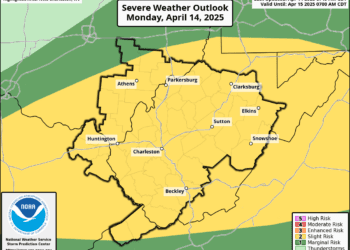(LOOTPRESS) – A slowly-developing La Niña is expected to shape weather conditions across the U.S. this winter, according to NOAA’s U.S. Winter Outlook, released by the Climate Prediction Center, a division of the National Weather Service. The forecast covers December 2024 through February 2025 and includes predictions for temperature, precipitation, and drought across the nation.
NOAA anticipates wetter-than-average conditions for the northern U.S., particularly the Pacific Northwest, the Great Lakes, and parts of Alaska. Conversely, drier-than-average conditions are projected for the Southwest, Southeast, and Gulf Coast regions.
“This winter, an emerging La Niña is likely to influence precipitation patterns,” said Jon Gottschalck, Chief of the Operational Prediction Branch at the Climate Prediction Center. La Niña typically shifts storm tracks to the north, resulting in drier and warmer conditions in the southern U.S., while the northern regions experience more moisture and storms.

Temperature
- Warmer-than-average temperatures are favored from the southern tier of the U.S. to the eastern Great Lakes, eastern seaboard, New England and northern Alaska. These probabilities are strongest along the Gulf Coast and for most of Texas.
- Below-average temperatures are most likely in southern Alaska, with below-average temperatures slightly favored from the Pacific Northwest to the northern High Plains.
- The remaining areas have equal chances of below-, near-, or above-average seasonal mean temperatures.

Precipitation
- Wetter-than-average conditions are most likely in the Great Lakes states, and above-average precipitation is also favored in northern and western Alaska, the Pacific Northwest and across the northern tier of the U.S. These probabilities are strongest in portions of Ohio, Indiana and Kentucky.
- The greatest likelihood for drier-than-average conditions are in states bordering the Gulf of Mexico, as well as in Texas and southern New Mexico.
- Much of California, the central Plains states and the I-95 corridor from Boston to Washington, D.C., have equal chances of below-average, near-average or above-average seasonal total precipitation.
Drought
- Widespread moderate to extreme drought continues across much of the Great Plains and in portions of the Rocky Mountains, especially farther south.
- Drought conditions are expected to improve or end in the Ohio River Valley, the Great Lakes region and portions of the northwestern U.S., including eastern Washington and Oregon and northern and central Idaho.
- Drought conditions are expected to persist across the Great Plains.
- Drought is likely to develop or worsen across portions of the Southwest and Gulf Coast.
Drought is expected to persist and potentially worsen across the central and southern Plains. “More than a quarter of the continental U.S. is currently experiencing moderate drought conditions, and the winter outlook suggests minimal relief,” said Brad Pugh, NOAA’s operational drought lead.
As La Niña continues to develop, it is expected to shape a unique winter across much of the U.S., reinforcing the need for enhanced prediction and preparation strategies.
Winter forecasting tools: Here’s what’s new at NOAA
- Over the past year, NOAA implemented several upgrades and improvements to its forecasting tools. In late 2023, the experimental Probabilistic Winter Storm Severity Index (WSSI-P) became operational. The product enhances communication with external partners, media and the public by visually representing the likelihood of potential societal impacts due to expected winter hazards over a 7-day period. This is complemented by an existing operational version of the Winter Storm Severity Index (WSSI), which is based on the official National Weather Service forecast of the most likely conditions over the next three days.
- NOAA is simplifying its suite of cold weather products to improve messaging of these hazards and provide better decision support services. As of October 2024, the Wind Chill Watch, Warning, and Advisory products were consolidated into the Extreme Cold Watch and Warning and Cold Weather Advisory products, respectively. The Hard Freeze Watch and Warning products were consolidated into the existing Freeze Watch and Warning products, respectively. More information can be found within this hazard simplication project webstory.
- NOAA will make the Experimental Probabilistic Precipitation Portal publicly available beginning in early November. This webpage will enable users to view the Low-End, Expected and High-End amounts of snow and rain, as well as probabilities of exceeding threshold amounts of precipitation. Data will be available through an interactive map, tables and graphics to assist local partners, including emergency management, with decision support.










